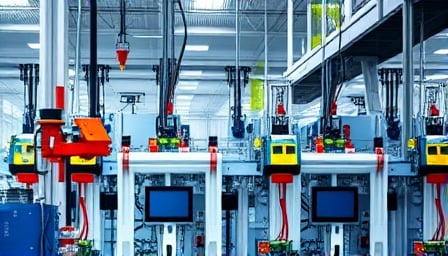Corporate Analysis: Sandvik AB Amidst Divergent Analyst Sentiment
Sandvik AB, a Stockholm‑based high‑technology engineering group, has attracted heightened scrutiny from financial analysts as the company prepares to report its October 20 earnings. While most market participants project continued growth, a recent downgrade by Pareto Securities underscores the presence of potential risks that could temper expectations.
Analyst Recommendations and Price Target Adjustments
- Citigroup has raised its target price to 307 SEK, citing robust demand in the mining sector.
- UBS has revised its valuation upward to 225 SEK following similar positive signals.
- Pareto Securities has moved its recommendation from buy to hold, retaining a 270 SEK target but citing a “perfect storm” of headwinds that could constrain upside.
The divergent outlooks illustrate the differing weighting analysts assign to short‑term market dynamics versus longer‑term structural trends. Citigroup and UBS appear to prioritize the company’s strong first‑half organic order growth, whereas Pareto highlights the confluence of macro‑economic pressures, commodity price volatility, and potential operational bottlenecks.
Mining Division Performance
Sandvik’s mining division drove much of the optimism, reporting an organic order growth of 14 % in the first half of the year. This expansion reflects sustained demand for drilling, blasting, and mining equipment in emerging markets, where infrastructure investment remains high. The division’s performance also suggests that Sandvik’s technology platform is maintaining a competitive edge against rivals such as Sandvik’s peers in the broader mining equipment sector.
Upcoming Earnings Outlook
Analysts anticipate a profit per share of 3.00 SEK for the October quarter, up from 2.58 SEK in the corresponding period last year. The consensus forecast also projects a 1.62 % decline in revenue compared to the same quarter a year earlier. Key factors contributing to this projection include:
- Commodity price volatility, which may dampen capital expenditure in certain mining regions.
- Supply chain constraints that could push up input costs and compress margins.
- Currency fluctuations, particularly the weakening of the Swedish krona against the US dollar, affecting revenue denominated in foreign currencies.
Broader Economic and Sectoral Context
The mining industry is currently navigating a transition toward more sustainable operations, with a growing emphasis on electrification and carbon‑neutral solutions. Sandvik’s investment in digitalization and automation positions it well to capture this shift, yet the pace of adoption remains uneven across markets.
In the broader industrial engineering landscape, competitors are similarly grappling with supply chain disruptions and a shift to “green” technologies. This convergence of challenges suggests that performance differentials will increasingly hinge on operational resilience and innovation capability.
Conclusion
While the prevailing analyst sentiment remains positive, the market is not insulated from risk. The downgrade by Pareto Securities serves as a reminder that even leaders in high‑technology engineering sectors must navigate macro‑economic headwinds and sector‑specific uncertainties. Investors should monitor Sandvik’s upcoming earnings release closely and remain vigilant to developments in commodity markets, regulatory environments, and technological adoption trends.
